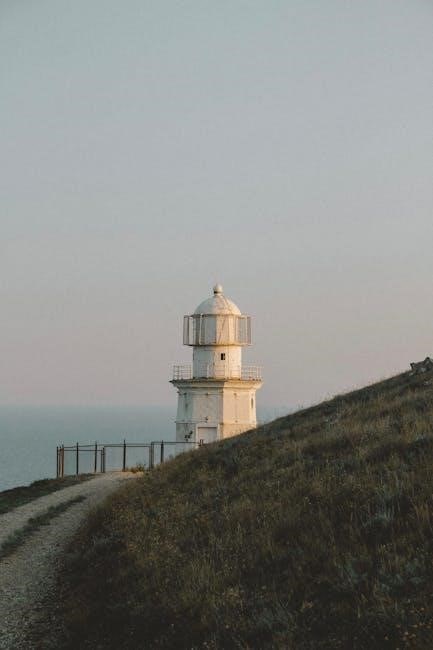oregon mushroom guide
Oregon Mushroom Guide⁚ A Comprehensive Overview
This guide provides a comprehensive overview of Oregon’s diverse mushroom ecosystem, covering identification techniques, popular edible species, and crucial safety practices for responsible foraging. Explore resources, apps, and expert advice to enhance your mushroom-hunting experience. Learn to distinguish safe varieties from poisonous look-alikes.
Essential Identification Tools and Resources
Accurate mushroom identification is crucial for safe foraging. Begin with reputable field guides focusing on Pacific Northwest species, many of which are available online and in bookstores. These guides often include detailed descriptions, illustrations, and photographs to aid in species differentiation. Consider investing in a quality magnifying lens to examine fine details like spore prints and gill structures, often essential for precise identification. Supplement your field guide with online resources such as the iNaturalist app, a citizen science platform with a vast database of mushroom observations and expert identifiers. Websites of mycological societies, like the Oregon Mycological Society, offer valuable information, workshops, and identification assistance. Remember, multiple resources are key for confident identification.
Utilizing Smartphone Apps for Mushroom Identification
Smartphone apps offer convenient tools for mushroom identification in the field. iNaturalist, a popular choice, allows users to upload photos of mushrooms for identification by a community of experts and AI algorithms. The app provides access to a vast database of mushroom observations, allowing you to compare your finds with similar specimens. While apps can be helpful, it’s essential to remember that they are not foolproof. Always cross-reference app identifications with information from reputable field guides and other reliable sources. Apps typically offer features like image comparison, species descriptions, and distribution maps. However, they shouldn’t be relied upon solely for definitive identification, especially when dealing with potentially poisonous species. Use apps as a supplementary tool alongside more traditional methods for confident identification.
Key Features for Mushroom Identification
Accurate mushroom identification requires careful observation of several key features. Begin by noting the cap’s shape, size, color, and texture—is it smooth, scaly, or sticky? Examine the gills or pores underneath, observing their color, spacing, and attachment to the stem. The stem itself offers valuable clues; consider its length, thickness, color, texture, and any presence of a ring or volva (a cup-like structure at the base). Observe the overall size and shape of the mushroom, paying attention to any unique characteristics. The spore print, obtained by placing the cap gills-down on paper, reveals the spore color, a crucial identification feature. Note the mushroom’s habitat—the type of tree it’s growing near, the soil type, and the surrounding environment—as this can provide important clues. Finally, and crucially, always consult multiple reliable sources for confirmation before consuming any wild mushroom.
Popular Edible Mushrooms of Oregon
Oregon boasts a variety of delicious edible mushrooms. This section highlights popular choices like oyster, chanterelle, and morel mushrooms, providing guidance on identification and culinary uses. Learn how to find and prepare these sought-after fungi responsibly.
Oyster Mushrooms⁚ Identification and Culinary Uses
Oyster mushrooms (Pleurotus ostreatus) are a popular choice for both novice and experienced foragers in Oregon. Their distinctive shell-like caps, ranging in color from whitish-gray to brownish, and their preference for growing in overlapping clusters on hardwood trees make them relatively easy to identify. However, always double-check your identification using a reliable field guide and/or expert verification before consumption. Avoid collecting oyster mushrooms from areas with potential pollution or pesticide use. Their texture is often described as meaty and their flavor is mild, lending itself well to various culinary applications. Oyster mushrooms can be sautéed, grilled, added to soups, or incorporated into stir-fries. Their delicate flavor pairs well with garlic, herbs, and a touch of lemon juice. Consider experimenting with different cooking methods to discover your preferred way to enjoy this versatile and flavorful mushroom. Remember, proper identification is crucial before consuming any wild mushroom. Consult reputable resources and, when in doubt, seek expert advice.
Chanterelle Mushrooms⁚ Finding and Preparing This Delicacy
Chanterelle mushrooms (Cantharellus cibarius and related species) are prized for their distinctive funnel shape, vibrant yellow-orange hue, and fruity aroma. In Oregon, they thrive in coniferous forests, often appearing in large groups during the fall. Look for their forked, gill-like ridges running down the stem, a key characteristic distinguishing them from potentially poisonous look-alikes. Careful identification is paramount; several toxic mushrooms resemble chanterelles. Use a reputable field guide and confirm your identification with an expert if uncertain. Once harvested, gently clean the chanterelles with a brush or damp cloth, avoiding washing them excessively to preserve their delicate flavor. Chanterelles are incredibly versatile in the kitchen; Their slightly peppery taste enhances various dishes. Sautéing them with butter and garlic is a classic preparation, while their earthy notes also complement pasta sauces, risottos, and omelets. Consider adding them to creamy sauces or incorporating them into poultry or fish dishes. Remember, responsible foraging practices involve leaving some mushrooms for the ecosystem and future harvests.
Morels⁚ A Forager’s Guide to Identifying True and False Morels
Morel mushrooms (Morchella species) are highly sought-after for their unique honeycomb-like cap structure and nutty, earthy flavor. However, distinguishing true morels from potentially toxic look-alikes is crucial. True morels possess a hollow stem and a cap with a distinct network of pits and ridges, forming a honeycomb pattern that extends all the way down to the stem. The cap is attached directly to the stem, not hanging free. False morels, such as Gyromitra species, have a brain-like or convoluted cap, often with a solid stem or a cap that is attached at the edges only. Their caps are typically darker in color and more fleshy. While some false morels contain toxins that can cause severe illness, others are edible after careful preparation. Never consume a morel unless you are 100% certain of its identification. Seek expert guidance if you’re unsure. When foraging, carefully examine each mushroom’s characteristics before picking it. Remember, responsible mushroom hunting involves leaving plenty for the ecosystem and future foragers. Once identified, clean your morels gently using a brush or soft cloth; avoid washing unless absolutely necessary.
Safe Mushroom Hunting Practices
Prioritize safe mushroom hunting by learning from experts, positively identifying each mushroom before consumption, and avoiding poisonous look-alikes. Responsible foraging ensures both your safety and the preservation of Oregon’s fungal biodiversity.
Learning from Experts⁚ Workshops, Guided Walks, and Societies
Enhance your mushroom identification skills and foraging safety by actively seeking guidance from experienced mycologists and experienced foragers. Numerous resources are available throughout Oregon to help you develop your expertise. Participate in workshops and guided walks offered by organizations such as the Oregon Mycological Society or local mycological clubs. These events provide hands-on learning opportunities, allowing you to examine various mushroom species under the supervision of experts. They’ll teach you crucial identification techniques, covering key features like cap shape, gill structure, spore print color, and overall morphology. Guided walks in diverse habitats allow you to observe mushrooms in their natural environments. Joining a mycological society offers ongoing education, networking, and access to a community of passionate mushroom enthusiasts. Beyond workshops and walks, many societies host lectures, presentations, and field trips, providing further opportunities for learning and refinement of your skills. This structured learning approach is crucial for minimizing the risk of accidental ingestion of poisonous mushrooms.
Importance of Positive Identification Before Consumption
The absolute paramount importance of positive mushroom identification before consumption cannot be overstated. Many edible mushrooms have toxic look-alikes, and misidentification can lead to severe illness or even death. Never consume a mushroom unless you are 100% certain of its identity. Relying on anecdotal rules or partial visual similarities is extremely dangerous. Thorough examination of the mushroom’s physical characteristics is essential. This involves meticulously checking the cap shape, color, texture, and presence of any scales or warts. Examine the gills or pores underneath the cap, noting their color, spacing, and attachment to the stem. Observe the stem’s length, thickness, color, and any rings or volva present at the base. Consider the mushroom’s overall habitat and associated plants. Use multiple reliable identification sources, including field guides, reputable apps (like iNaturalist), and expert consultation. Cross-reference your findings with several sources to increase your certainty. When in doubt, err on the side of caution and discard the mushroom. Your health and safety depend on your ability to accurately identify mushrooms before consumption. Never risk consuming an unidentified mushroom, as the potential consequences are far too severe.
Avoiding Poisonous Look-Alikes⁚ Crucial Safety Precautions
Oregon’s forests harbor a variety of mushrooms, including some dangerously poisonous species that closely resemble edible ones. Mistaking a poisonous mushroom for an edible one can have devastating consequences, ranging from severe gastrointestinal distress to organ failure and even death. Therefore, exercising extreme caution during mushroom hunting is crucial. Familiarize yourself with the appearance of poisonous look-alikes common in Oregon, such as the deadly Amanita species, which can resemble some edible mushrooms. Never rely solely on a single identification characteristic. Poisonous mushrooms may share some visual similarities with edible varieties, making careful observation across multiple features necessary. Always cross-reference your findings with several trusted identification resources. Attend workshops or guided walks led by experienced mycologists to learn firsthand about distinguishing features and potential hazards. When in doubt, discard the mushroom. It is far better to err on the side of caution than risk serious illness or fatality. Remember that even a small amount of a poisonous mushroom can cause severe harm. Prioritize safety above all else when foraging mushrooms. Regularly consult updated field guides and online resources to stay informed about poisonous look-alikes and their characteristics.










Leave a Comment